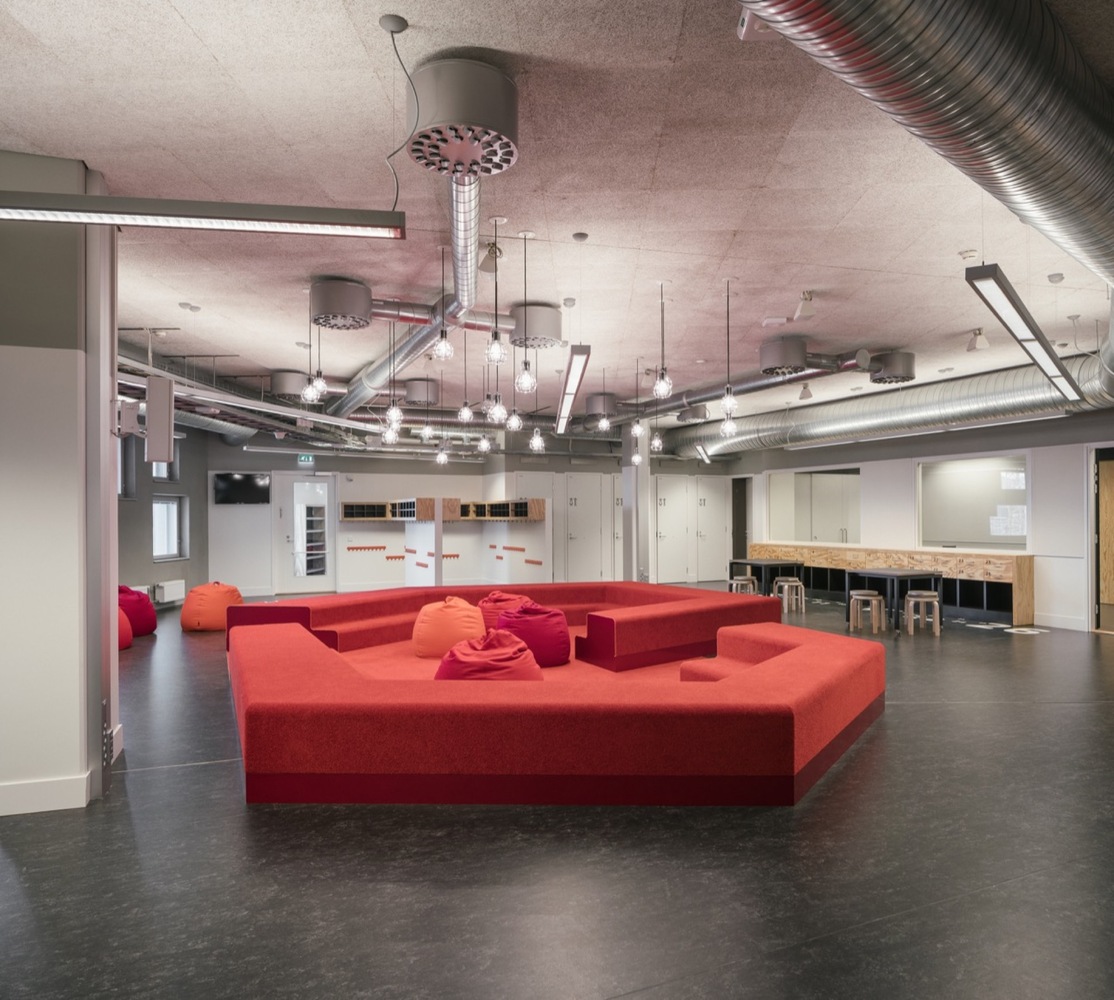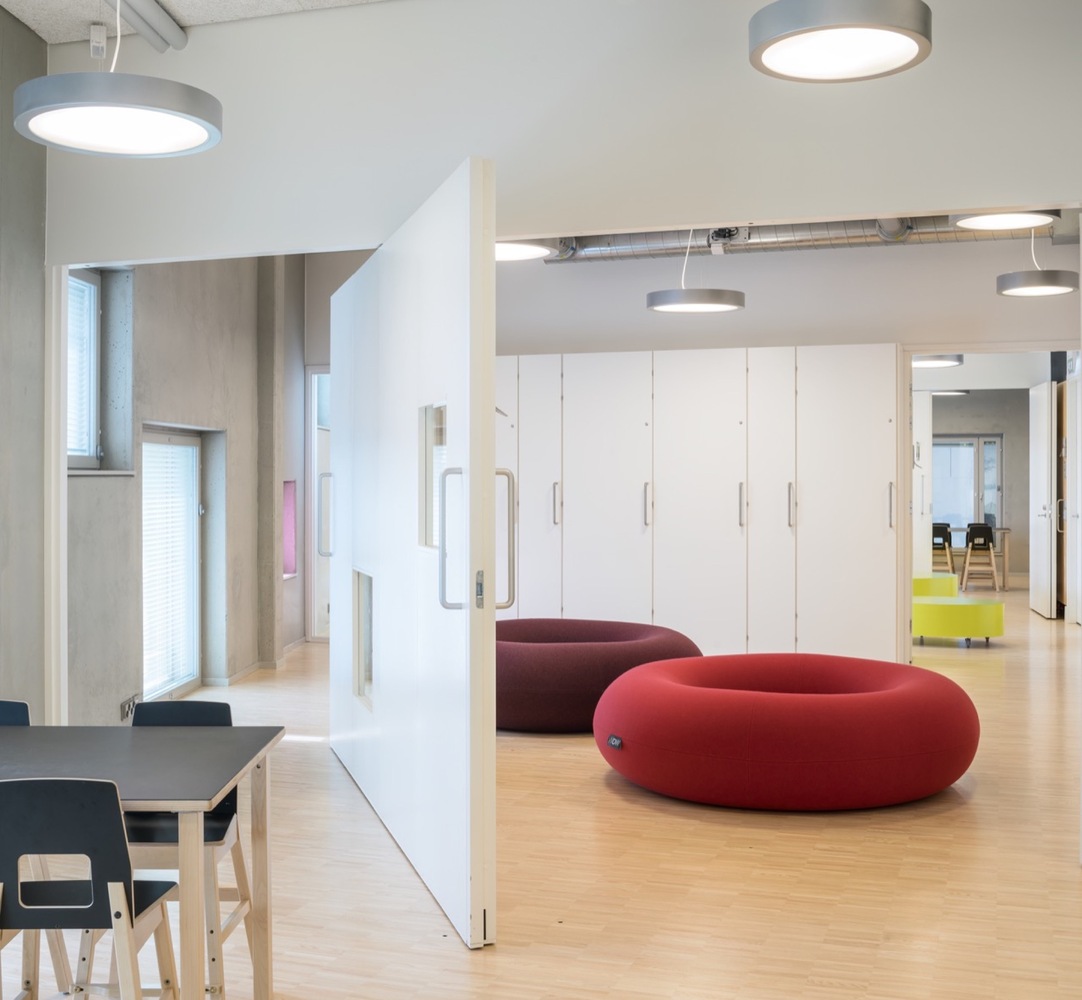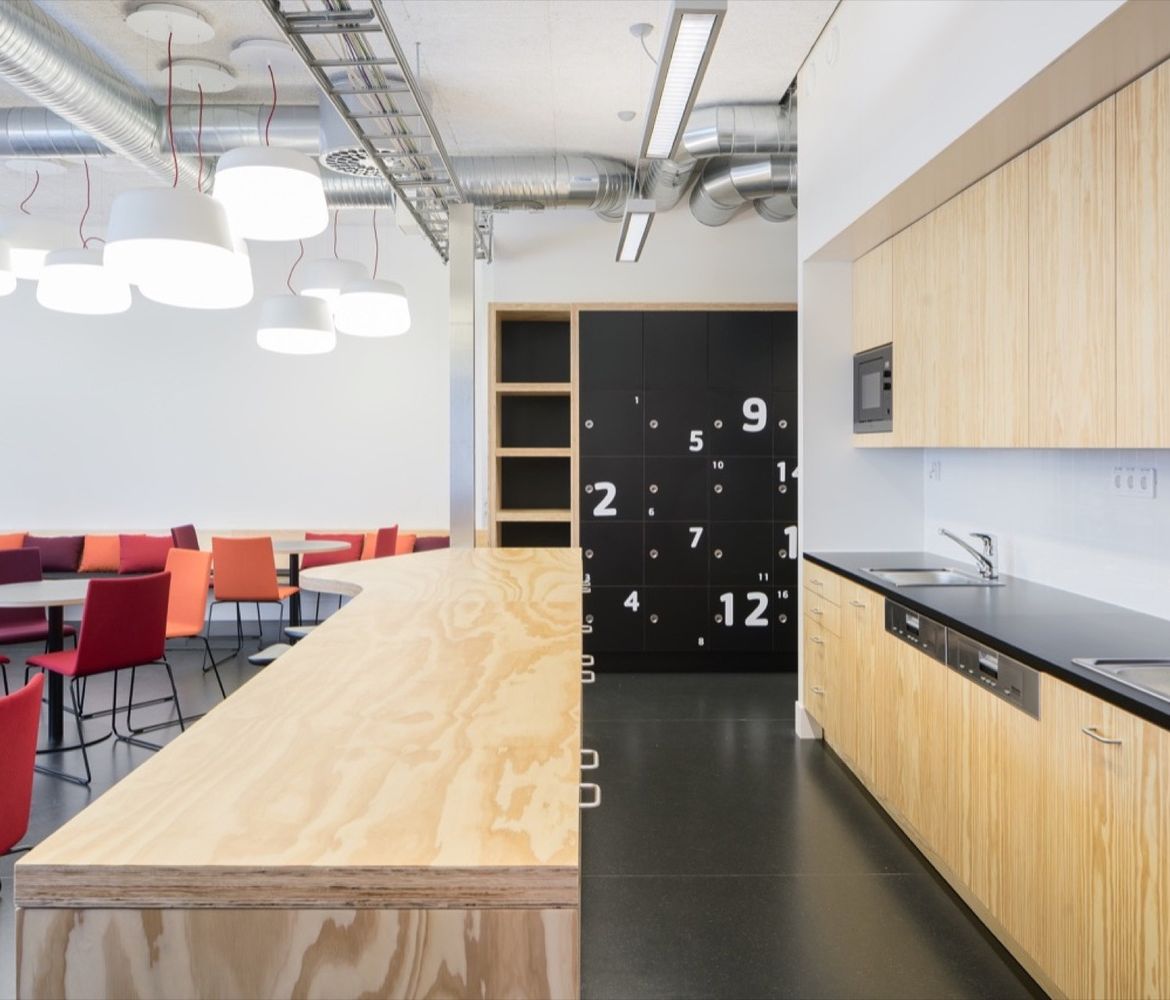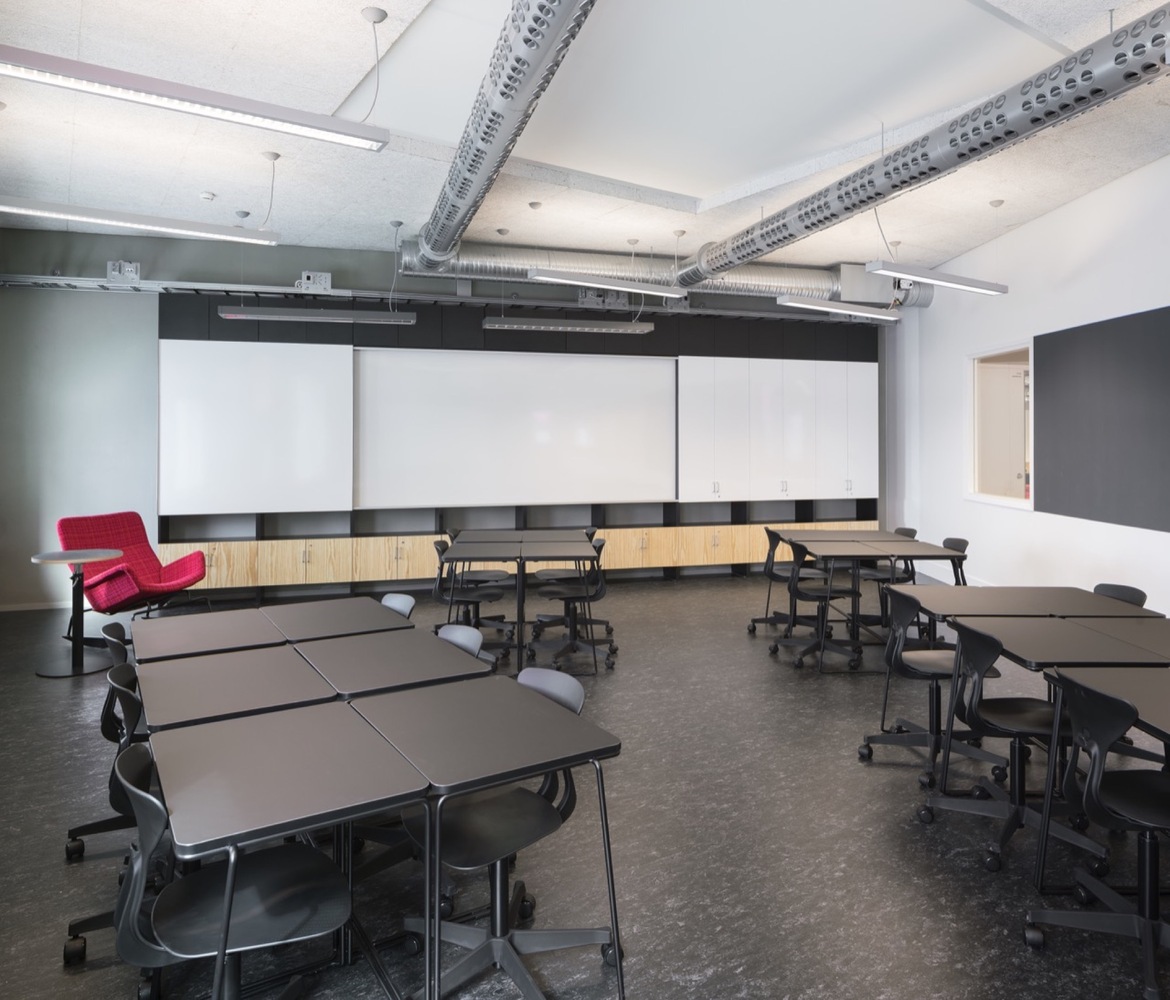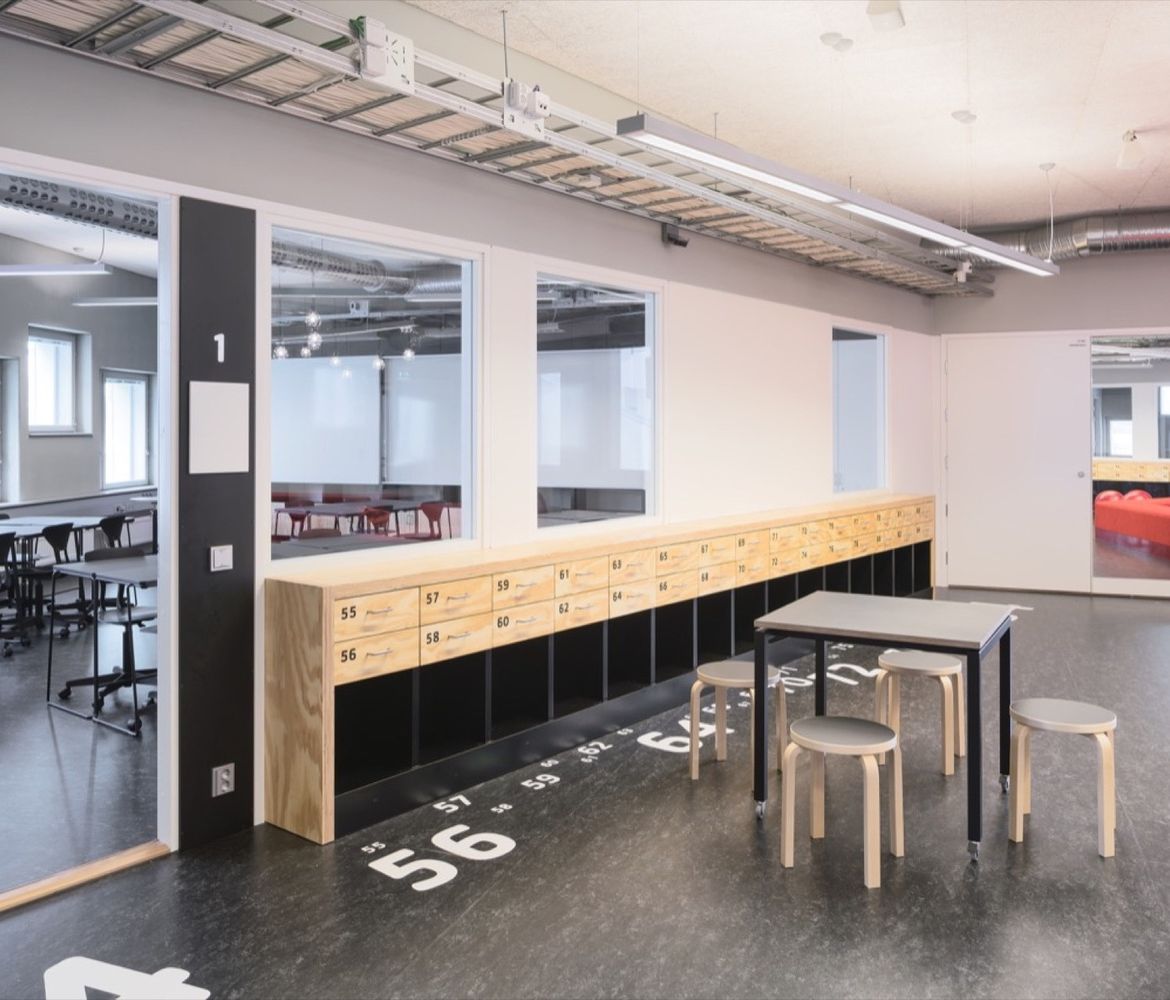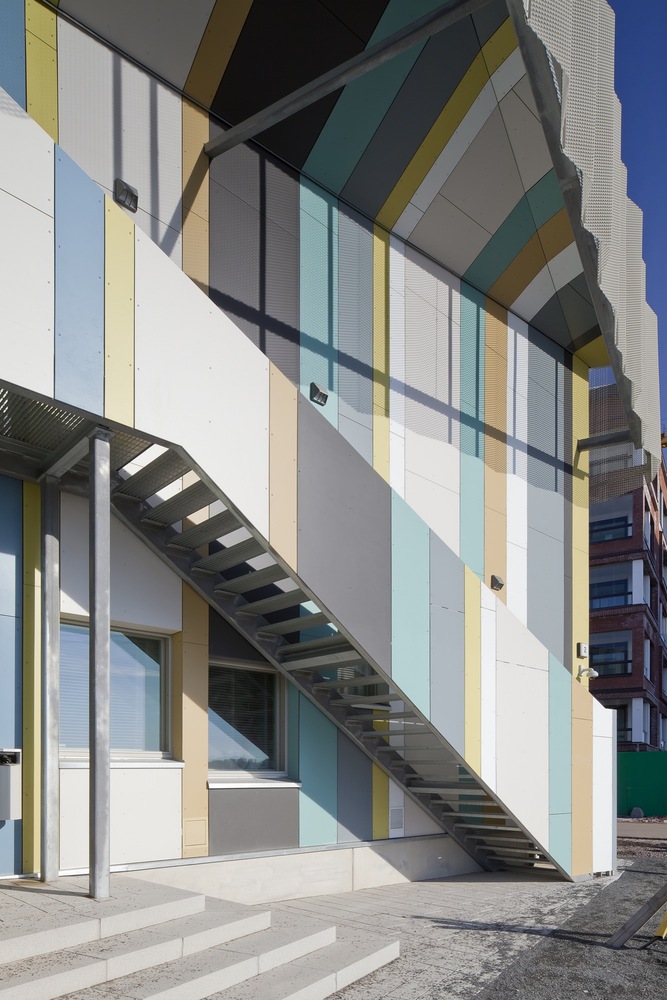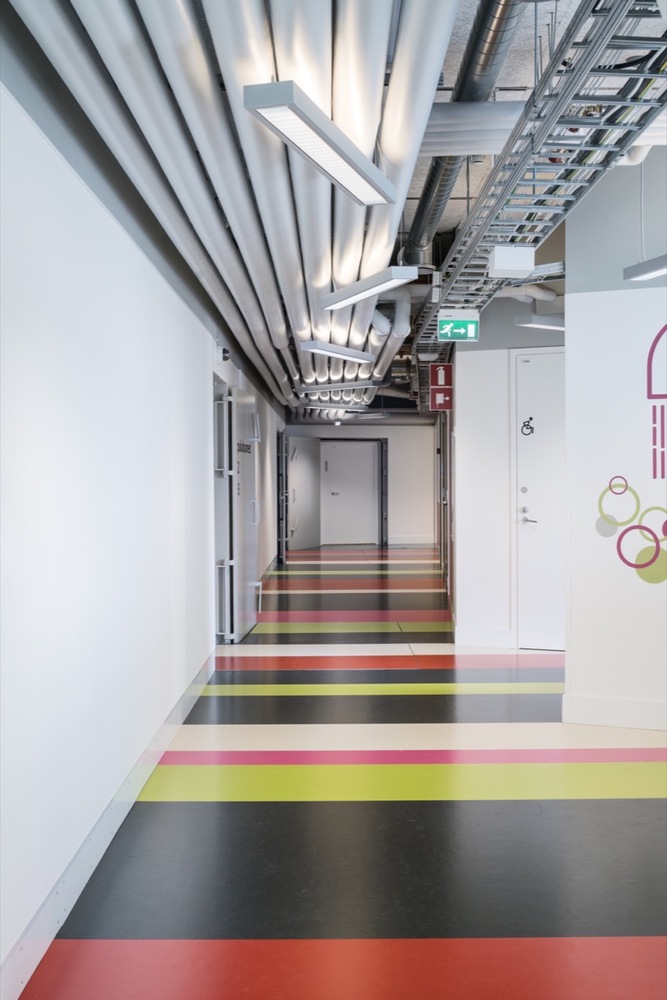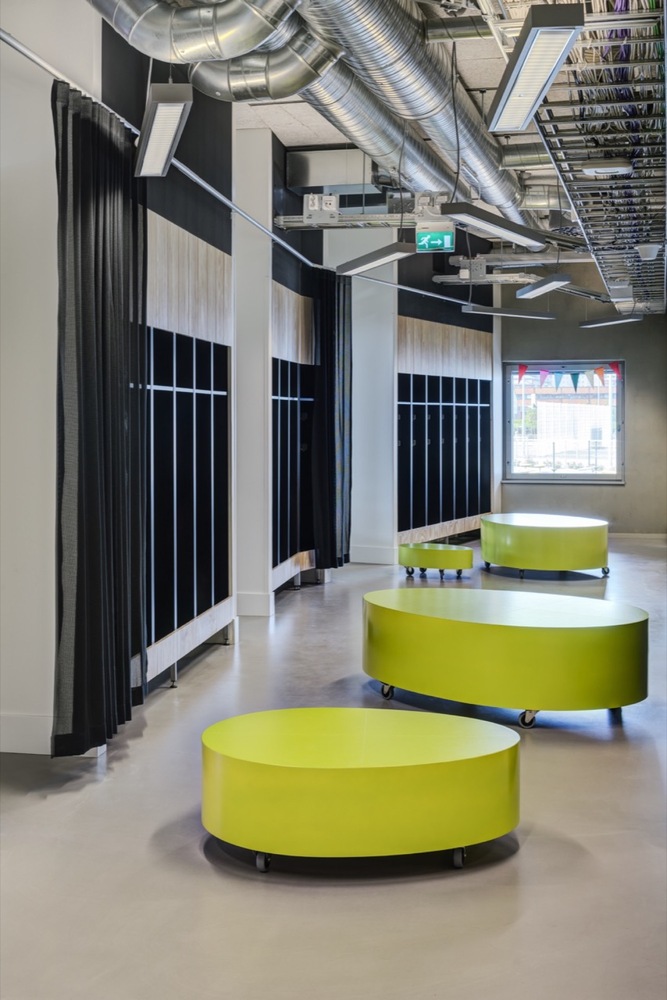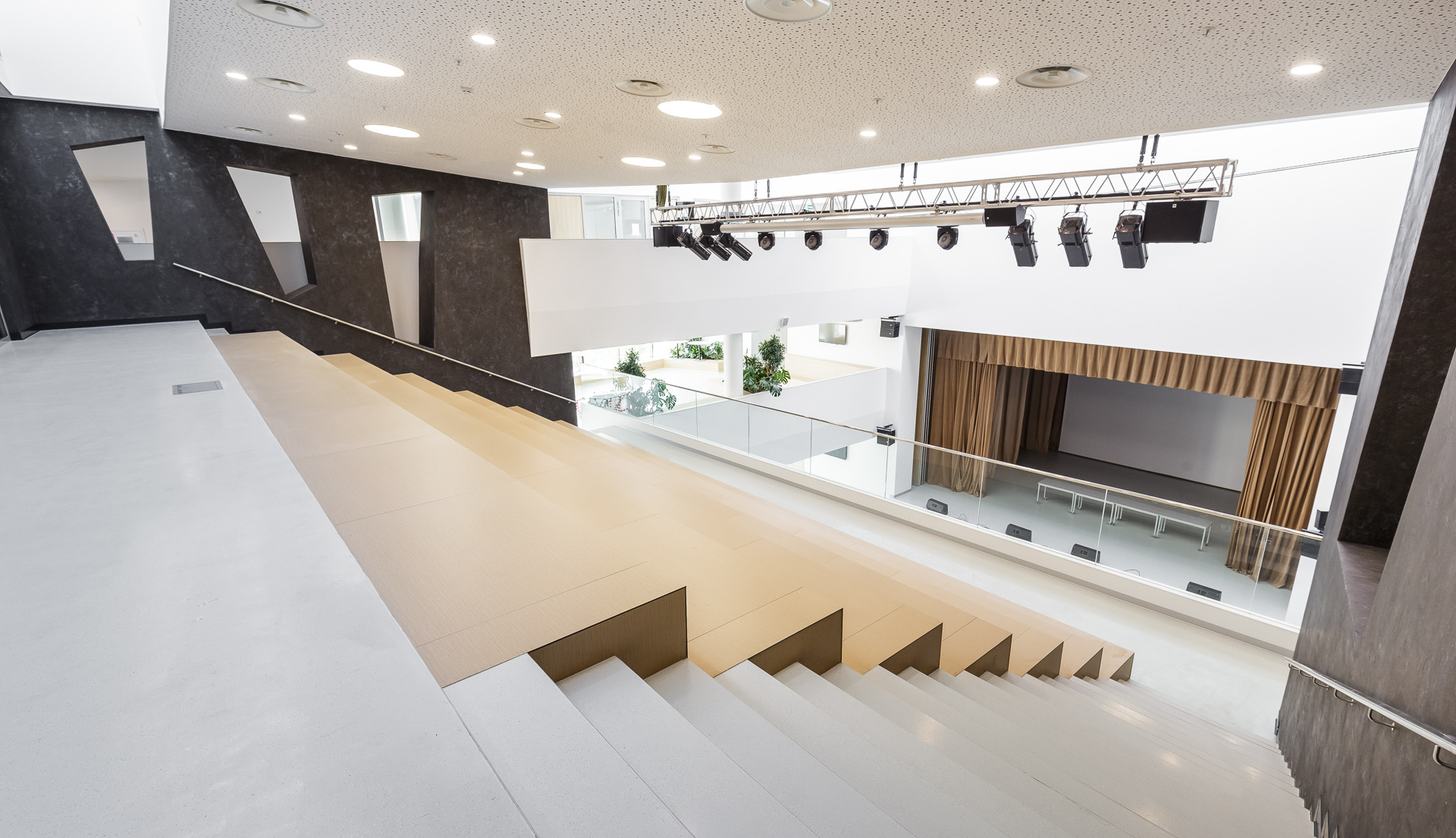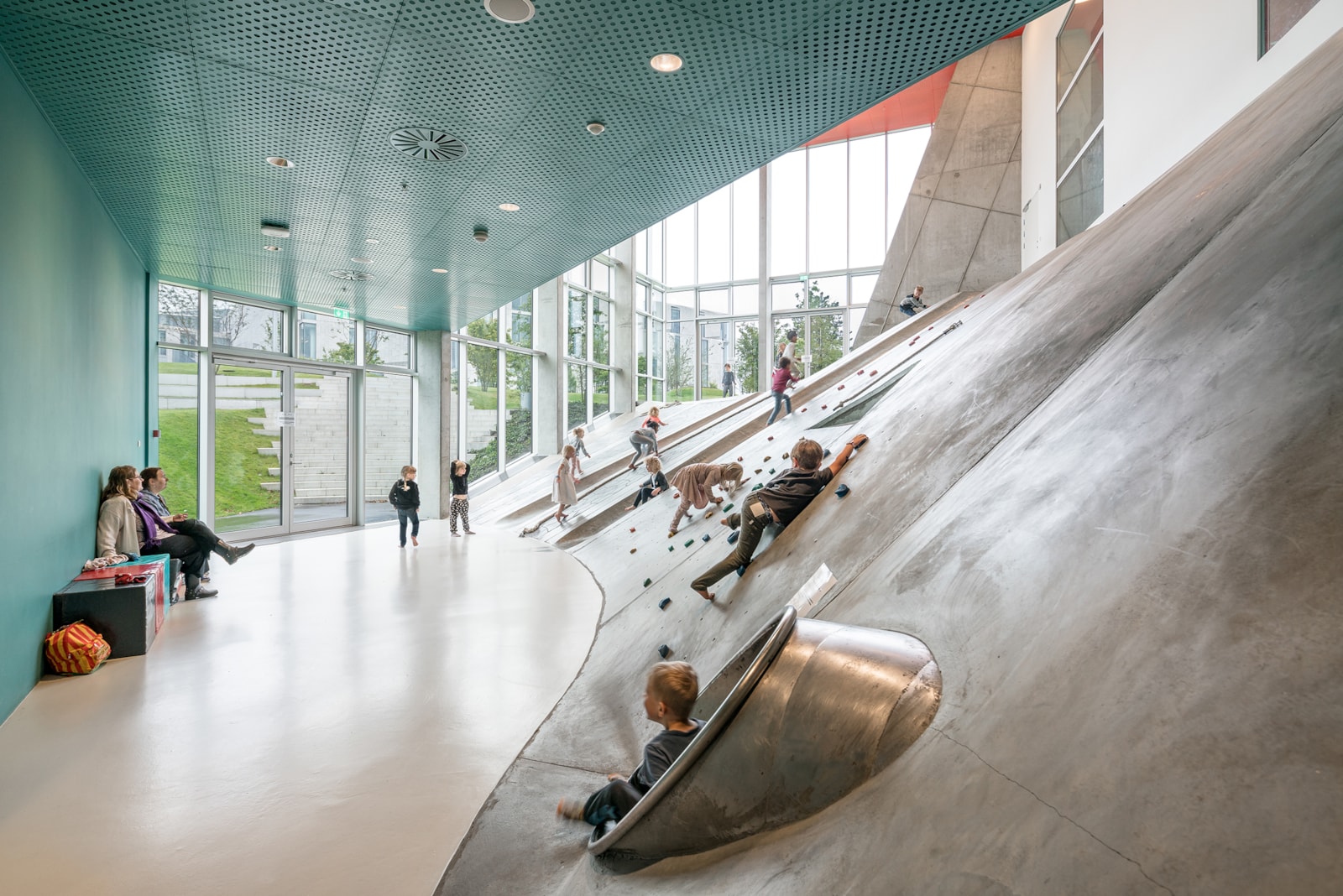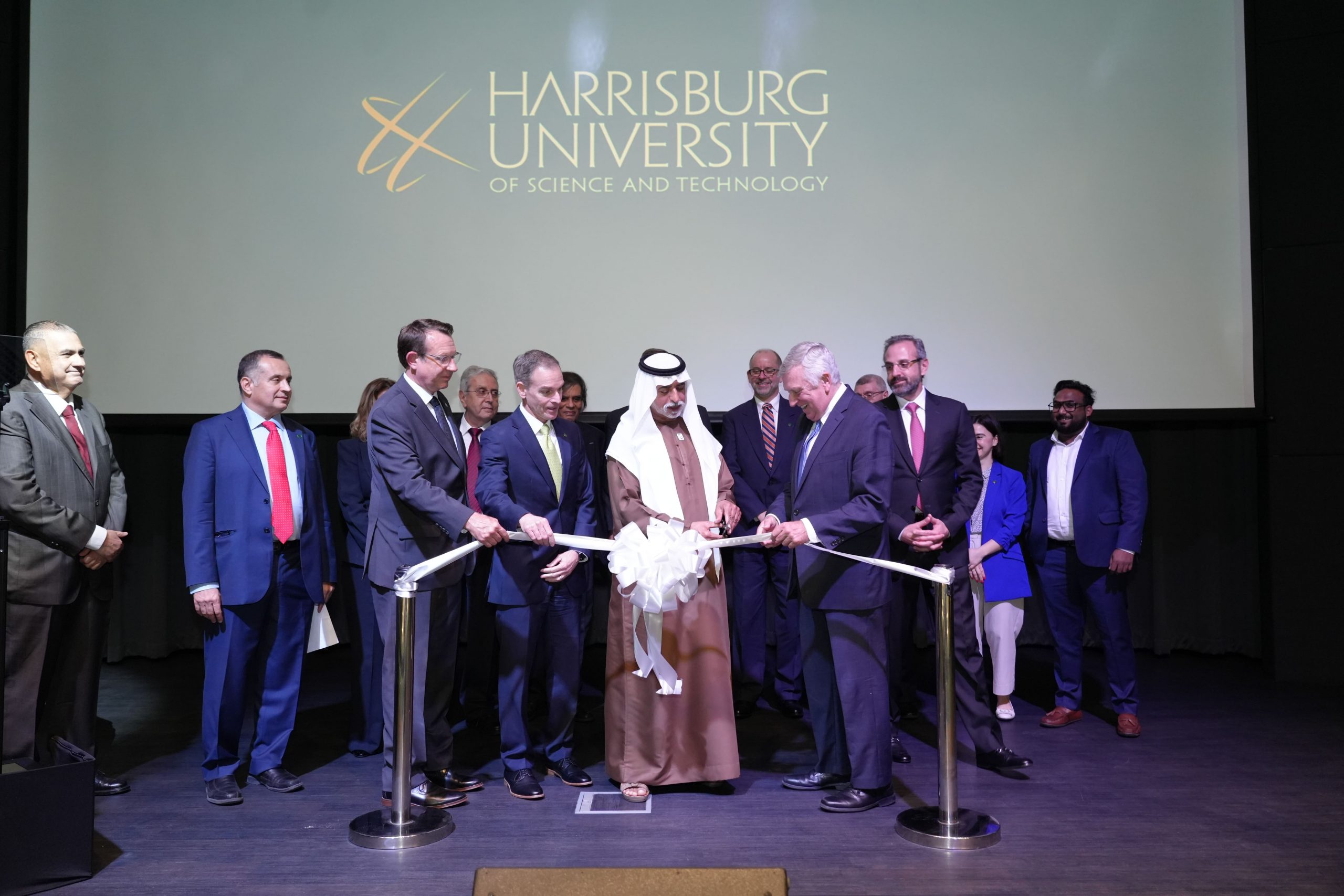What do you think hinders an architect?
My answer to this question is very simple: all brakes are in the head. In the head of an architect, in the head of the customer, and so on. The more you read, watch, see, and learn, the broader are your views, the more interesting are your ideas, and the more diverse are your projects. Of course, there are physical limitations, such as the size of the territory, but finding ways to solve problems is always a matter of will: it is for the architect to decide whether he or she hinders or continues his or her own development.
And where are the growth points? What are the strengths of architects and designers?
Our bureau has not even a slogan, but rather a principle: we say “rething”: rethink, reconsider. For example, if you can’t organize the space comfortably – look at it in a different way. I was called to work at the JKMM bureau a long time ago, when they had just won a bid and wanted to build a star-shaped school, and I said I would love to come on the project, but I had never done anything like that before. The guys responded that it was no big deal – they were also taking on such a project for the first time. And I believe that this is the only right approach: to learn by doing, to continually evolve. Our bureau is over twenty years old, and we have more than one very successful project to our credit, which were the first of their kind for the bureau: the first school, the first library, the first university, the first church, and so on.
Impressive variety!
Oh, yes! In a good sense, we question all ideas; it helps to rethink and do things differently, in an unexpected way. Take the church; we built it from scratch, and I had to come up with the whole design for it, from the candlesticks to the church pews to the font. It was very difficult to look at such a traditional space unconventionally!
Norms and the educational process aside, what materials and physical parameters can generally be called innovative?
I believe that wood is the best and most innovative material: it is eco-friendly, it ages beautifully, it is durable. Generally, natural materials are always my favorites. Another aspect is incredibly rapid development of technical aids. In recent years, equipment in Finland has often been used as part of the educational process: students use it to measure their water and electricity consumption and study various phenomena, which results in a change of habits and behavior. I consider such use of equipment an innovative approach. Thus, nuances in structuring of the building and rooms layout can make a school innovative without extra investment; but modern technology certainly provides new possibilities. The second phase of Kalasatama school will have an English know-how – a black box room with interactive walls, creating the possibility of immersion learning; you can fill it with anything, like virtually visit Louvre, combining geography, art history, and French.
What engineering solutions can be called innovative?
All technical equipment is a flight of fancy for an engineer. Many solutions are now taken for granted, but not so long ago they were engineering insights: lights that respond to the presence of a person in the room, water that turns off automatically. Today, engineers are racking their brains over sustainability and energy efficiency: the Finnish government’s zero-energy regulation for all new buildings and buildings under renovation is putting them under substantial pressure. Zero energy consumption and environmental friendliness are the most important criteria for new buildings.
Exactly! Today a progressive school building is seen as self-sufficient, environmentally friendly, and energy efficient.
Yes, of course! I think it’s just a matter of will. Finland is now very close to making its buildings self-sufficient. So, Kalasatama school’s progressiveness is not all our merit: they have organized a system for irrigating plants with treated wastewater without our participation.
In Finland, schools are now mostly built in new residential areas inhabited by young families with children. The young citizens are not only more environmentally responsible than the older generation, but also more demanding; so the new residential buildings conform to the new standards, and new neighborhoods are often experimental. Throughout the Kalasatama region, for example, a new method has been tried out for the first time in Finland, where garbage from 180 bins is blown through underground pipes at 70 km/hour directly to the sorting station. Neighborhood residents carefully sort their own trash into different bins: bio-waste, cardboard, paper, plastic and mixed trash; and this responsibility and meticulousness allows for robotic and speedy delivery to the stations. Now the same principle already works in other new or rebuilt neighborhoods. The system is actually old, it was developed back in the 1960s, but its implementation is quite costly and, most importantly, depends on the responsible attitude of all residents without exception.
I understand about the capital, but what about the other cities?
Of course, the capital is always a role model. Big cities, such as Turku and Tampere, are also quite advanced. But schools and new residential areas are now being built in other settlements, and of course the architects who win bids for the development work in accordance with the new standards. The building’s progressivity does not depend on the city; there may be tiny schools in the countryside that will give everyone else a head start in terms of self-sufficiency.
Photo: Kalasatama school; Mika Huisman, Hans Koistinen
Is construction of an innovative school building way more expensive than of a “standard” one? What will be the difference in the project budget?
The cost will be about the same. Of course, if the customer wants a bunch of technical novelties, expensive computers, tablets, the price will be much higher. In general, I believe that for the same money, you can build a standard four-corner box or a well- designed building compliant with the new recommendations of the Finnish Department of Education.
Is every innovation a unique case or a process that can be replicated? Does an innovative solution make sense if it is only used once and cannot be reproduced in another environment?
Of course, there may be some experimental one-time things, but I believe that one must learn from the experience of others. I mean that each innovative solution should not be copied but should provide tools and methods for solving problems and tasks.
An example of this kind is our work at Saunalahti kindergarten. There are always a lot of shoes at the entrance to the kindergarten, and quickly drying them after a walk is a frequent problem. I came up with the idea of making an entire wall the dryer and hooking it up to the central heating system: that way no electricity is wasted. Then I used a similar system at Kalasatama primary school. All of my colleagues thought that this dryer should be patented, but I believe that everyone can use this to their convenience.
At Kalasatama school, there are no corridors; instead there are open spaces, and the classrooms are not quite classical, prompting a change in the educational process. Who drives the change: innovative architects or education professionals?
Of course, this is a collaboration, but I believe that pedagogy is always paramount, and the job of architecture is to support and provide for the learning process. If the spaces inspire and feed the interest in using other methods of study, that’s great, but the architecture should by no means create frames or vectors.
When we started working on the Kalasatama school project, the client, i.e. the city of Helsinki, had already begun to interpret the new recommendations of the education department, and provided us with the terms of reference. For example, the guidelines say that classes will not have their own classrooms, and the city has interpreted this idea in such a way that it considers own desks unnecessary as well. So we made different cabinets and drawers for textbooks and schoolchildren’s things, and this was not our idea, but the customer’s instructions. The second thing the customer noticed was the number of teacher’s moves and use of various equipment in the classroom during the lesson; actually, it appeared that the teacher does not even have time to go to the teacher’s desk – so it was considered unnecessary. On the other hand, the teacher needs a comfortable chair that is easy to move around the room and even outside. The relationships in the classroom, therefore, are no longer hierarchical, but equal, the teacher being a member of the group who moves around in space just like the others. To summarize, the task of architecture and design is to provide everyone with a space to work comfortably.
What does “multifunctionality” mean to you? Is multifunctionality achievable in any room?
For me, multifunctionality is not so much about furniture that folds up, is easy to move around and can be combined in different ways, but more about the rooms themselves. For example, the arrangement of outlets can make or break the possibility of using the room for radically different purposes, and with the help of sliding walls you can fit the room to the right size.
When will Kalasatama middle school be ready? Was the project developed all at once in its entirety or were there adjustments later, based on the experience of the primary school and the kindergarten?
Middle school construction has already begun. Initially there were no plans to divide the project into two parts, it was a solution to the financial and political problems. Generally, it’s rare for a school to be built in two phases; and for Kalasatama, of course, this is not an ideal solution at all, because, firstly, it’s difficult to build in an actively growing neighborhood, and secondly, children who are finishing the primary school (sixth grade in Finland, age 12) will now have to go for a couple of years to another school and return here in the ninth grade.
On the other hand, now we have an opportunity to make adjustments and correct what appeared to be irrelevant or unclaimed. For instance, the first stage was largely focused on the spaces for group work, but no one thought of introverts who need a place for quiet solitude. We will correct that at stage two.
How common is it in Finland to build a school in two stages?
They do it, but not very often. More often than not, schools are now built in new neighborhoods, and the development plan is known in advance, so the school is built at once and completely. It happens that there are not enough seats for everyone. Recently, however, they have started doing schools in two stages more often – families move in, mostly young people, their children are small, and they need kindergartens and primary schools in the first place. This is an interesting trend, and, again, all funding is not required immediately, but stage-wise.
For me, multifunctionality is not so much about furniture that folds up, is easy to move around and can be combined in different ways, but more about the rooms themselves. For example, the arrangement of outlets can make or break the possibility of using the room for radically different purposes
Do you think that to create an innovative school, you have to be immersed in the process: go to classes, talk to students and teachers; or, on the contrary, it requires distance to come up with unconventional solutions?
There is a grain of reason in both approaches; you have to be an outsider who nevertheless knows perfectly how the school works. I have already created quite a few spaces for children: kindergartens, schools, libraries; and I always keep in mind that the end users are not only children but also adults who work with them. You need to be aware of how the process works, so that everyone is comfortable. So, the capital region has established at the legislative level that kindergartens should also have furniture for adults, because kindergarten teachers should be able to use normal furniture, rather than be hunched over for years on tiny baby chairs. On the other hand, as an outsider, I can ask silly questions and by getting answers to them, find out-of-the-box solutions; being involved in the process, I wouldn’t be able to do that – I would learn basic answers to trivial questions as part of the workflow.
I was once asked how I was able to create such child-friendly spaces when I didn’t have children of my own. I responded that I was a child myself, and now I’m creating a space and thinking about where I-child would be comfortable, what I-child would like. Traditions of pedagogy, ministerial recommendations and architecture change, but children have always been and will always be children.
In Russian educational design, there is a trend for office style to penetrate the school space: co-working zones and teachers’ rooms are being created in an open office format, and office furniture is being used. How do you feel about this stylistic mix?
We also have this phenomenon – the style of work in the office is transferred to the school space, and this is not related to the furniture, but to the principles of work. Everyone can choose how he or she wants to work: at a desk, on a sofa, or in a chair; standing, lying down, or sitting; alone or in a group, and so on. These principles of freedom of choice began in the offices and are now commonplace in both senior and junior classes. The teacher, of course, helps the students choose the way of work that would best suit the studied phenomenon, subject, and method; but the space itself was originally designed so that everyone could find a comfortable place, even if it’s not at the table.
You designed spaces for both schools and universities. What is the difference and what techniques are equally relevant for uni students and schoolchildren?
There is not much difference in the approach, but there is a difference in solutions. Children, especially from primary school, are still not independent, they need to be supervised, they need help, and this must be taken into account in the organization of space and arrangement of furniture. Students, on the other hand, are adults, experienced learners, able to make decisions, choose their place and work independently. When we build a university, we can ask students for their opinions: they have the skill to analyze data, they can generate good, substantiated ideas; however, you shouldn’t ask directly, but as if you were driving round the ring road.
Recently we brought together three university libraries: the book collections and staff of three different libraries were united under the roof of the new Harald Herlin Learning Center. Well, the entire staff unequivocally said that they all needed their own offices. Then we put the question differently and asked who would work, if possible, remotely, who likes to work in a cafe, how many steps a day a person takes, and so on; and then it turned out that only several employees spent almost all day in their offices, whereas all the rest move around the library, and they just do not need an office; it would be much more convenient to use the computer that is nearby at the moment.
Apart from this library, JKMM has two high-profile library projects in its portfolio: in Turku and in Seinäjoki. Is the library an educational space or something else entirely? How do Finnish libraries interact with schools?
A library is an important part of the educational environment, a large umbrella covering partially the school and the kindergarten activities; it is also a place of social meetings and a self-education area. I’ve created many libraries already, because librarians are a very tight-knit community, and your good reputation gets passed along quickly by word of mouth, so our architectural firm is often hired to renovate old libraries.
Kindergarteners are the largest category of library visitors, and teachers often use the library rooms for lessons: it’s good for children to have a change of scenery, and you can also use the round trip as material.
Tell us about your current projects?
Now we are renovating an international school in Ruoholahti. It’s an old building from the 1960s, with typical period architecture. They have a very tight budget, so we work gradually, floor by floor. We started with the first floor, let’s see how our ideas will work in their conditions and with their educational program.
The second project is the office of a Chinese Internet programming school for children. They have about ten million users and about one thousand employees; our job is to develop image stores for this school where windows would serve as a showcase for the school’s activities. This is a project of enormous proportions.
Today’s third project is the university of the arts which combines three academies within its walls: music, theater, and art. Designing for such creative individuals is a unique challenge, and the activities of creative students are not all school desks and textbooks, they require special calculations and thinking.
How much do you think architecture should be tied to geography, other than taking weather conditions into account, of course? Should school architects in other countries repeat after the Finns, or does every country have its own journey in this sense?
I’m not a proponent of wow-effect architecture and design, where things and buildings are taken out of context and squeezed into an alien environment. I think that an architectural or design project should not be copied thoughtlessly, but adapted to the context. It is very important to borrow experience, to constantly learn and adopt; however, it should not become a carbon copy but a building block of one’s own projects. Of course, you can completely recreate a foreign project as a franchise; for example, there is a Finnish school in Vietnam, not only designed by the Finns, but also employing Finnish teachers using the Finnish system. But in general, I think that we need a comprehensive approach: school architecture and design should resonate with pedagogical approaches, and the style of foreign countries should be adapted and assimilated into the local culture. Power is in collaboration, in association, and in integration.
